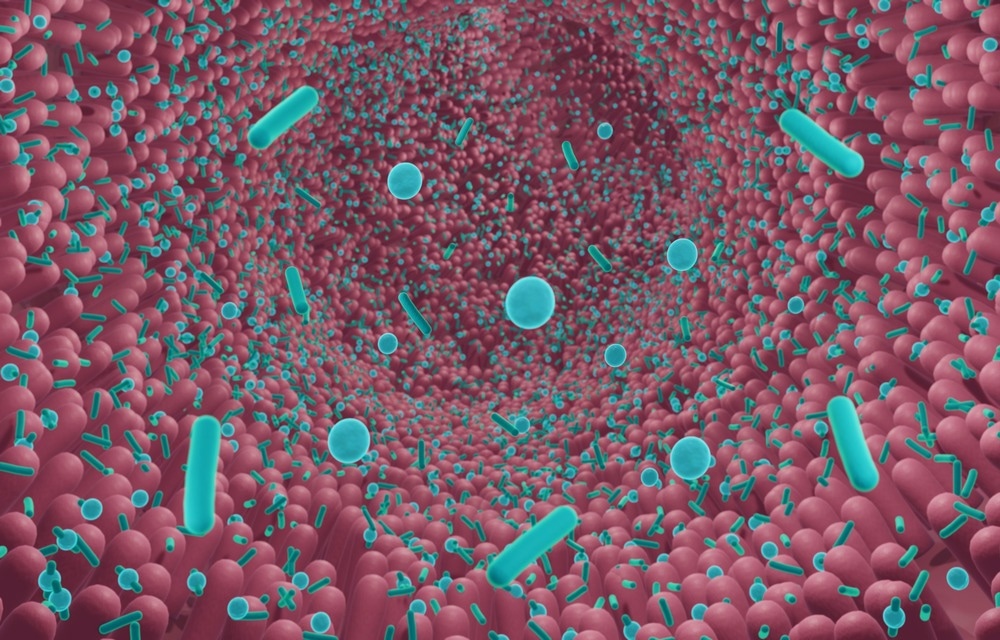Probiotics can help maintain a healthy gut microbiome or rebuild populations of “good bacteria” following an antibiotic course. They may now be utilized as a viable treatment strategy for certain intestinal diseases like Crohn’s disease.

Image Credit: ART-ur/Shutterstock.com
Scientists from ACS Central Science devised a microgel delivery technique for probiotics that protects “good” bacteria while actively removing “bad” ones. The technique treated intestinal inflammation in mice without causing any negative effects.
A delicate equilibrium of bacterial populations exists in the digestive system. When this balance is upset, harmful bacteria can take over the colon, causing it to enlarge and ultimately leading to colitis. Certain diseases, such as inflammatory bowel disease and Crohn’s disease, entail chronic colitis and are currently treated with immunosuppressants. These drugs are costly and non-specific, leading to the development of antibiotic-resistant bacteria.
Another method is to provide beneficial bacteria, or probiotics, to aid in restoring balance. However, to reach the colon, a treatment must first pass through the stomach acid, avoid being flushed out by the intestine, and then compete for space with the countless invading bacteria.
This strategy could be made possible by combining probiotics with a drug delivery method, although most existing systems shield the probiotics from digestion without impacting the bacteria responsible for the condition.
Zhenzhong Zhang, Junjie Liu, Jinjin Shi, and co-workers planned to combine probiotics with specific microgel spheres that could not only safeguard the good bacteria but also actively aid in the removal of the bad.
The researchers developed their system by combining sodium alginate, tungsten, and calcium-containing nanoparticles into small, spherical microgels and coating them with helpful, probiotic bacteria. The gels shielded the bacteria while they passed through the stomach and lengthened their stay in the colon. Calprotectin proteins, which are abundant in colitis, coupled with the calcium and disassembled the gels, permitting the tungsten to escape.
By replacing molybdenum in a key enzyme substrate of the harmful bacterium Enterobacteriaceae, tungsten hindered the microbe’s growth while leaving the probiotics intact. The system allowed probiotics to flourish in the intestine without causing any negative effects in trials using a colitis mouse model.
Furthermore, mice treated with microgel spheres did not display many of the symptoms of colitis, such as shortened colons or compromised intestinal barriers, indicating that the delivery mechanism could be a viable treatment strategy. Though the researchers aim to test its efficacy in more advanced preclinical models, they say this work offers a fresh look into colonizing probiotics.
Source:
Journal reference:
Yang, J., et al. (2023) Calcium Tungstate Microgel Enhances the Delivery and Colonization of Probiotics during Colitis via Intestinal Ecological Niche Occupancy. ACS Central Science. doi.org/10.1021/acscentsci.3c00227.